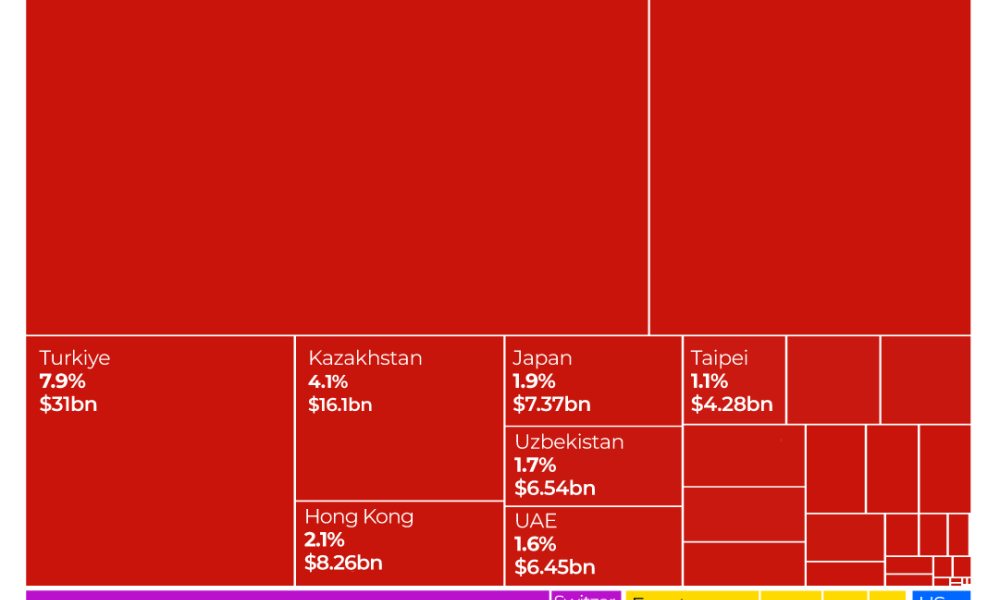
India has responded strongly to recent sanctions, tariffs, and threats from the United States and the European Union over its continued purchases of Russian oil amid the ongoing conflict in Ukraine. The Indian government accused Washington and Brussels of hypocrisy, pointing out that both entities themselves continue to import significant volumes of goods—including energy—from Russia.
This marked India’s most direct challenge yet to the growing pressure from the U.S. and EU on trade and its strategic ties with Russia. The shift in tone came shortly after former U.S. President Donald Trump threatened to significantly increase tariffs on Indian goods, which had already been set at 25% and were scheduled to take effect on August 7. In a social media post, Trump claimed he would “substantially raise the Tariff paid by India to the USA” due to India’s imports of Russian crude oil.
Earlier in July, the EU imposed sanctions on Nayara, one of India’s largest private oil refiners, which is majority-owned by Russia. The bloc also banned the import of refined petroleum products derived from Russian crude, further impacting Indian refineries. Until Monday, India had maintained a relatively quiet stance, but this changed following Trump’s latest remarks.
In response, the Indian Ministry of External Affairs issued a statement accusing the U.S. and EU of double standards, suggesting they had previously encouraged India to buy Russian oil. The statement emphasized that India’s actions were driven by the need to secure stable and affordable energy supplies, particularly after traditional sources were redirected to Europe following Russia’s invasion of Ukraine in February 2022.
The spokesperson for the Ministry, Randhir Jaiswal, stated that the U.S. had actively supported India’s oil imports during the early stages of the war, as part of efforts to stabilize global energy markets. He also pointed out that the EU and the U.S. continued to engage in trade with Russia, despite their criticisms of India’s actions.
According to Jaiswal, the EU imported more goods from Russia in 2024 than India did. Specifically, European imports of liquefied natural gas (LNG) reached a record 16.5 million tonnes in 2024, surpassing the previous record of 15.21 million tonnes in 2022. Additionally, the U.S. continues to import uranium hexafluoride for its nuclear industry, palladium for electric vehicle production, fertilizers, and chemicals from Russia.
Experts suggest that India’s response is not unexpected, given the economic stakes involved. The U.S. remains India’s largest export market, with American imports of Indian goods reaching $87 billion in 2024. However, India’s trade deficit with the U.S. stands at $46 billion, making it vulnerable to potential tariff increases. Trump’s threat to impose even higher tariffs could further strain India’s export revenue.
Similarly, the EU’s ban on refined petroleum products sourced from Russian crude could negatively impact Indian refineries. Market intelligence firm S&P Global reports that Indian exports of petroleum products to Europe have surged from $5.9 billion in 2019 to $20.5 billion, largely due to India’s ability to purchase subsidized Russian oil and sell it to the West.
For India, the decision to continue importing Russian oil comes with both economic benefits and risks. While it has saved billions of dollars through discounted crude, ceasing these imports would mean losing access to a critical source of energy. Moreover, the Western push to reduce reliance on Russian oil has led to price caps and restrictions that have affected global supply chains.
Indian officials argue that the West is now changing its position, having previously supported the idea of buying Russian oil to stabilize prices. This was echoed by Eric Garcetti, the U.S. ambassador to India under the Biden administration, who noted that India’s purchases helped prevent oil prices from rising during the crisis.
Data supports India’s claims. In 2024, the EU’s total trade with Russia amounted to 67.5 billion euros ($77.9 billion), compared to India’s $68.7 billion in trade with Russia. While European trade with Russia has declined sharply since 2021, the bloc continues to import significant quantities of Russian gas. According to the Centre for Research on Energy and Clean Air, the EU has spent $105.6 billion on Russian gas since the invasion of Ukraine—equivalent to 75% of Russia’s 2024 military budget.
The U.S. also continues to import various goods from Russia, including chemicals, despite a significant drop in overall trade volume. Total Russia-U.S. trade in 2024 stood at $5.2 billion, down from $36 billion in 2021.
Economists and analysts have criticized the double standards applied to India. Jayati Ghosh, an economics professor at the University of Massachusetts Amherst, stated that it is “ridiculous” for the U.S. and EU to criticize India while continuing to trade with Russia. She emphasized that India cannot afford to be pressured into opening its agricultural markets to U.S. agribusiness, which would threaten the livelihoods of millions of small farmers.
Russia itself has condemned the Western measures against India, with Kremlin spokesperson Dmitry Peskov stating that sovereign nations have the right to choose their trade partners. He accused the West of attempting to sever trade ties between other countries and Russia, calling such actions illegitimate.
Some experts believe that Trump’s threats are part of broader negotiations aimed at securing a favorable trade deal with India. However, talks have stalled over key issues, particularly in agriculture, where India has long protected its domestic farming sector. Dhar, a trade economist, noted that opening up the agricultural market to U.S. imports would be economically and politically unacceptable for India.
As tensions continue to escalate, the situation highlights the complex interplay between economic interests, geopolitical strategies, and international relations. With both the U.S. and EU seeking to limit Russia’s influence, India finds itself caught in the middle, navigating a delicate balance between maintaining its economic interests and responding to external pressures.


